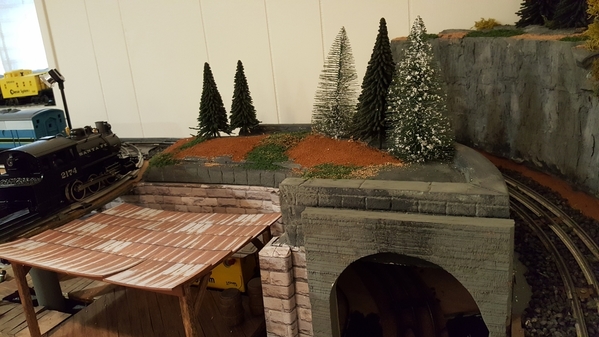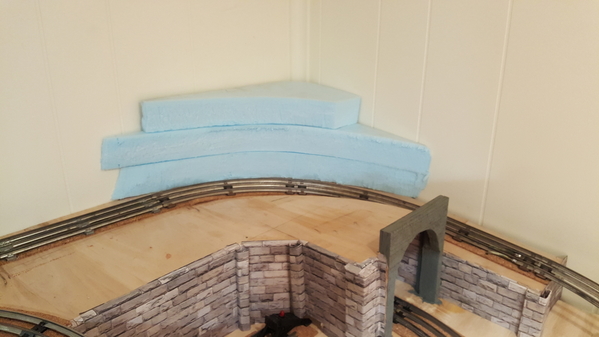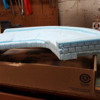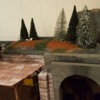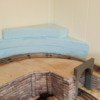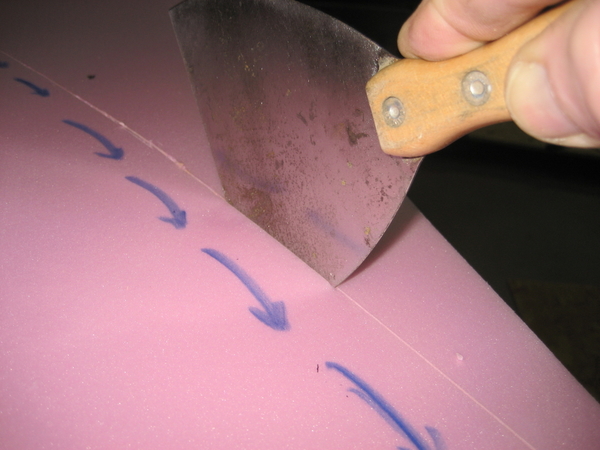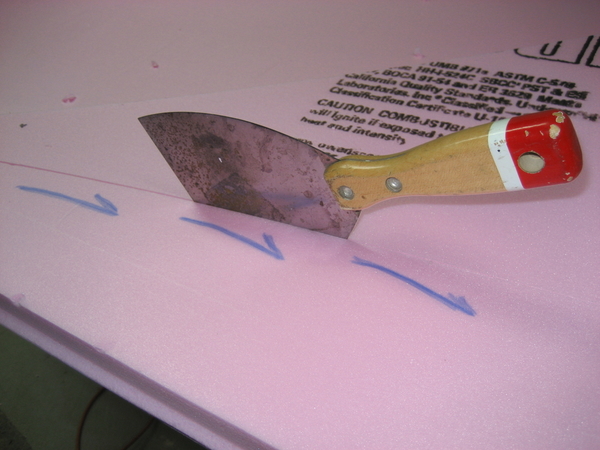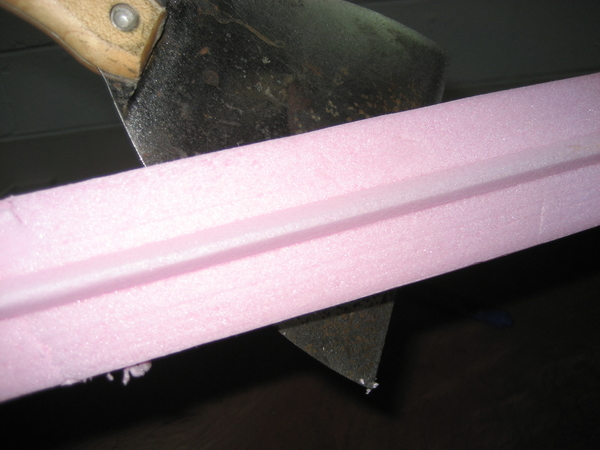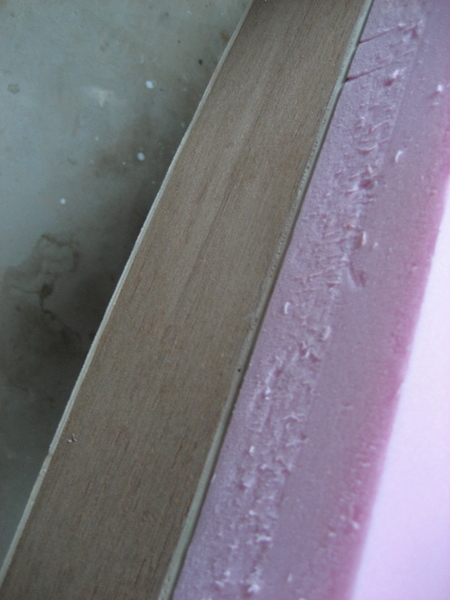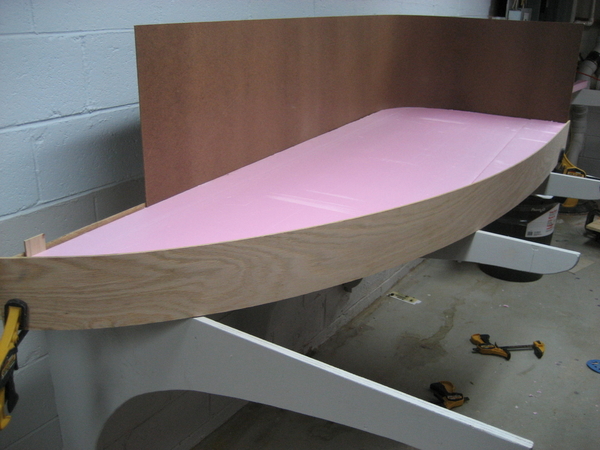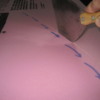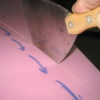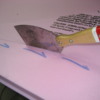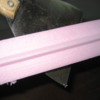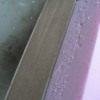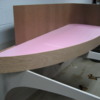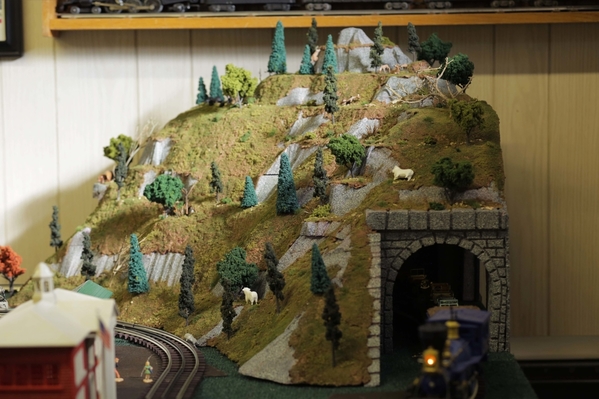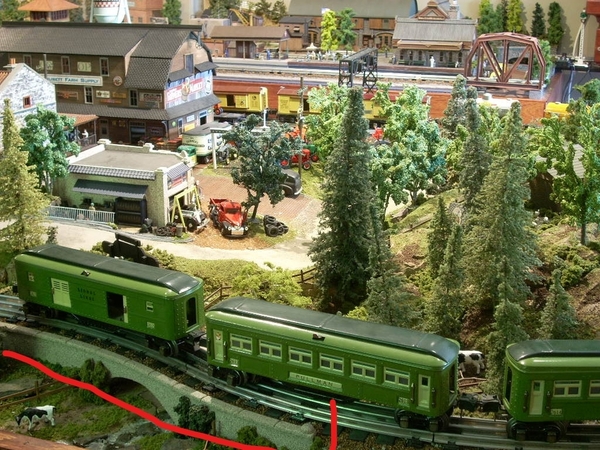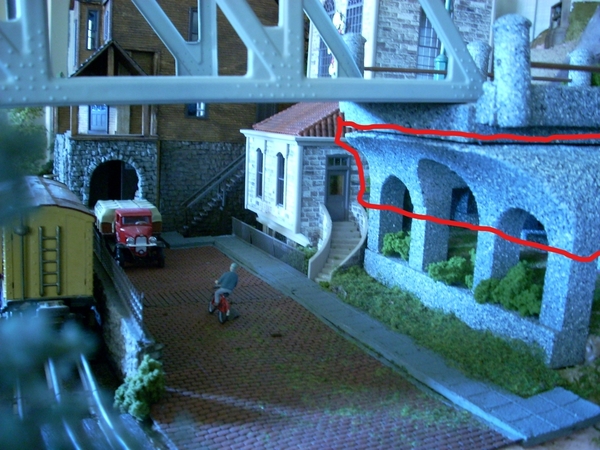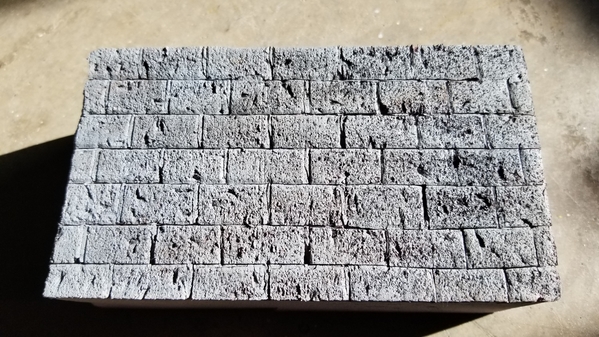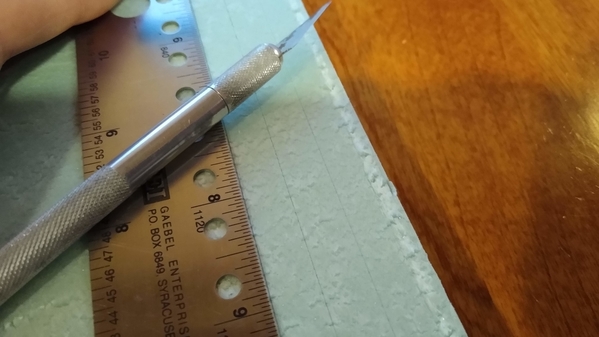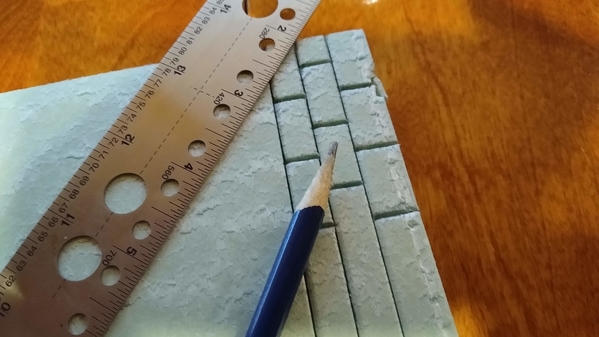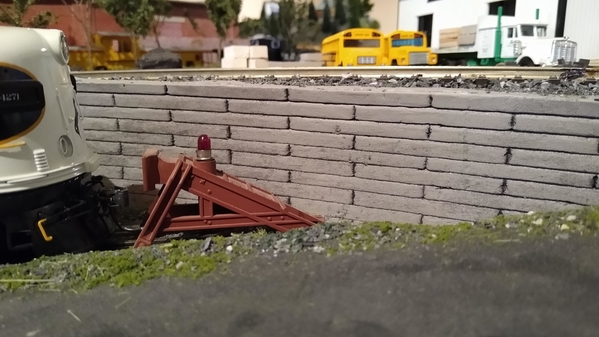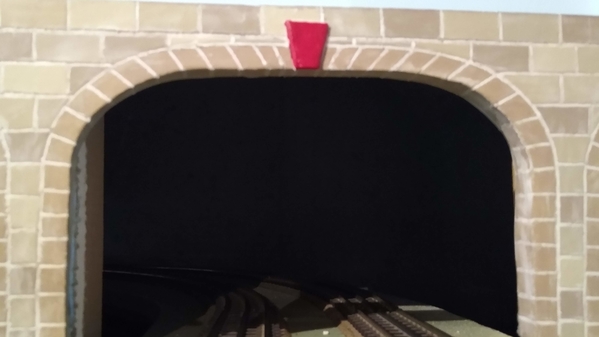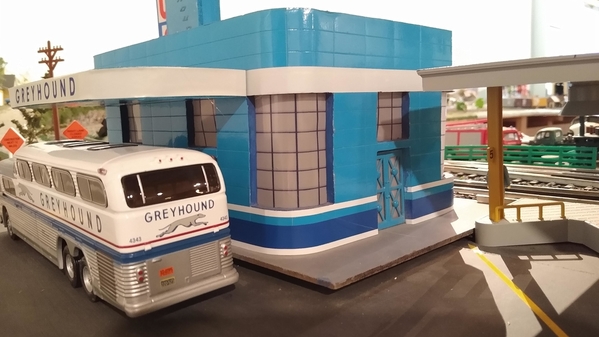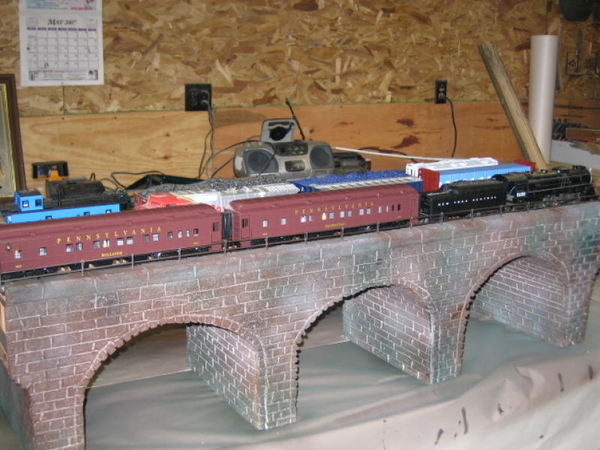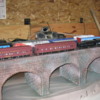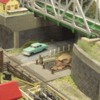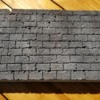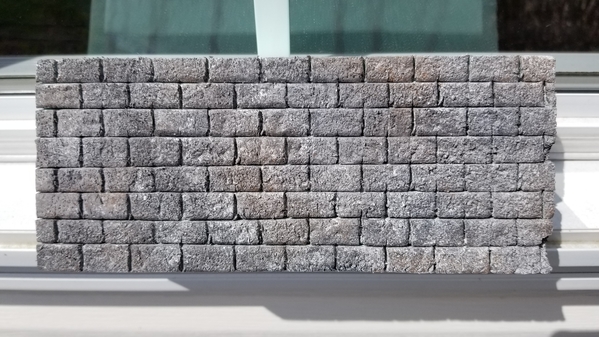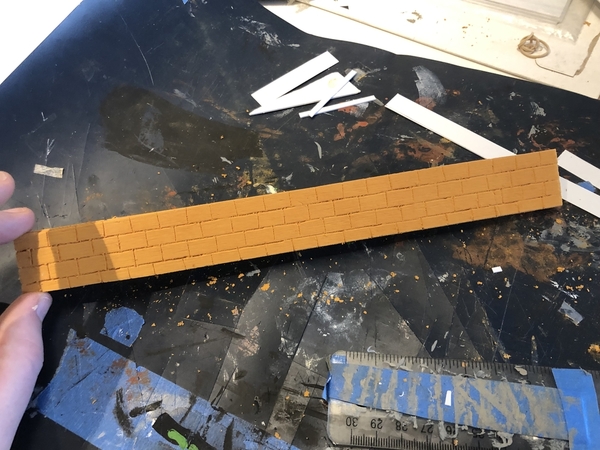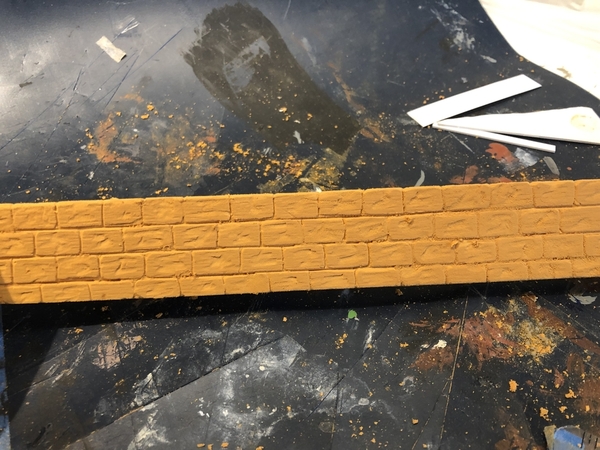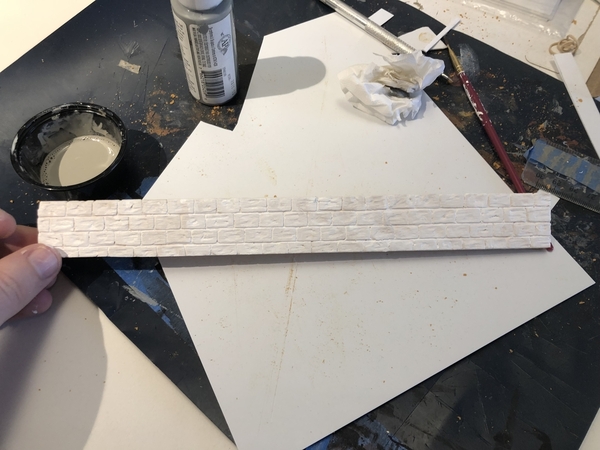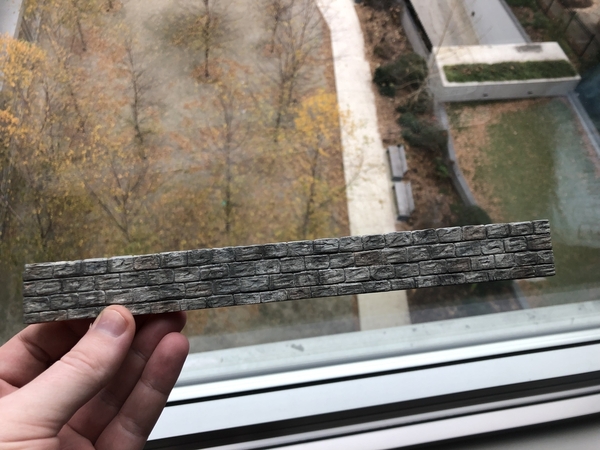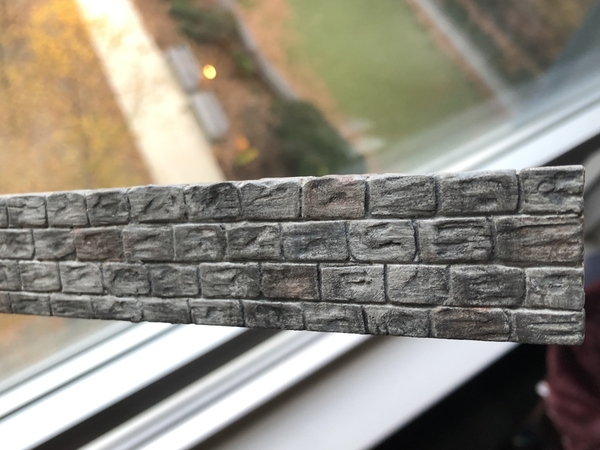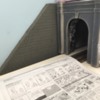The first time I tried to make a masonry wall with foam, it turned out looking like something you would see on Mr. Rogers Neighborhood Land of Make Believe…anything but realistic. Then I saw a few threads by Tim W (ilovebridges) and tried to copy what I saw. Tim did some amazing work, but unfortunately, he passed away a few years ago. After some practice, I was able to make masonry that was a bit more realistic.
Here are some things I have made with foam.
Arch Bridge
Bridge Abutments
Retaining Walls - note that the tunnel portals are Scenic Express
Here are the tools I use. Well most of them.
CUTTING FOAM TO SIZE
I generally use 1” thick foam. The ¾” thick foam can also be used, but that tends to be a bit warped so it’s sometimes best to cut it to short lengths and glue pieces together as needed. The foam can be cut to size with a hand saw and miter box or power (table, miter or radial arm) saw. To cut a curved archway, I used a razor saw to cut it oversize and then a rasp and sandpaper to bring it to finished size. Cutting and sanding the foam is a mess. The foam “sawdust” particles develop a static charge and stick to everything. It’s best to wear a dust mask. If using a power saw, you should have a good dust removal system. And a shop-vac is a must for cleanup.
WARNING CAUTION DANGER
Using a power saw (especially a table saw and especially a large piece of foam) can be hazardous to your fingers. If the foam gets even a little out of line, the saw will grab the foam, melt it to the blade, chew up the foam and sometimes send the foam flying across the room. I use an old blade so it doesn’t matter if it gets foam melted to it. The foam has to be held firmly and you need to be very careful to keep the cut in line with the blade, but if it goes bad, it is usually safest to just get your hands away and let the blade chew up the foam or send it flying. If using a table saw, it might be best to first cut the foam a bit oversize with a razor knife and then make the final cut with the saw.
SCRIBE AND CUT MORTAR LINES
After the piece is cut to size, scribe the horizontal lines. Then use a triangular file to cut the horizontal mortar lines. You need to be careful when cutting the mortar lines as it is easy to make mistakes if you don’t concentrate. But if you do make a mistake, it’s easy to patch with foam putty. If the wall has 90 or 45 degree corners, it’s easier to cut the mortar lines before you glue the pieces together since you can lay each piece flat while cutting (filing). Just make sure the horizontal lines on adjacent pieces line up. Vertical lines can also be scribed and cut at this time (before gluing pieces together). I use a spoon file to cut the vertical mortar lines. You can make the block size whatever you want, but lately, I’ve been making them ½” high X 1-1/2” wide. That’s kind of massive for O gauge (2’X6’), but then the stone blocks I see in real railroad bridges are kind of massive.
GLUING PIECES TOGETHER
To glue pieces together when making corners or when putting together small scraps to make a bigger wall, I use construction adhesive that is foam compatible along with hot melt glue. The hot melt glue bonds in a few seconds and the construction adhesive makes a good permanent bond. Wipe off any excess glue / adhesive before it dries with a piece of scrap foam.
FOAM PUTTY
Use foam putty to fix any mistakes and to patch the glue lines for pieces that have been glued together. Before patching glue joints, cut a V in the surface with an Exacto knife. This will ensure there is no glue remaining on the surface and will create a V surface for the putty to adhere. After the foam putty cures, use sandpaper to smooth the surface. Then re-cut mortar lines to remove foam putty as needed. Sandpaper can be used at this point to cut a bevel on the top edges and corners of the wall.
TOOL MARKS
I use a wood rasp to simulate tool marks on the surface of the blocks. I smack the block with the rasp several times and at different angles. A keyhole saw can also be used if you want more pronounced tool marks. On the last few pieces, I made, I used a punch set and pressed lightly to add dates to a few blocks. Before painting, do a test fit and make any needed adjustments.
PAINTING
I use latex paint. First I coat the whole thing with dark gray using a 1” brush. Then I go over it with a small stiff brush to make sure all the mortar lines have paint. You may need to go over it a few times to make sure that no pink is showing. When the initial coat is dry, you can apply other colors (lighter shades of gray, brown, etc.) on some blocks using a small stiff bristle brush. Let that dry overnight and then apply a wash coat (8 parts water to 1 part paint) over the entire surface for weathering. The wash coat also brings out the tool marks. I use the same dark gray color in the wash coat that I use for the initial painting.






